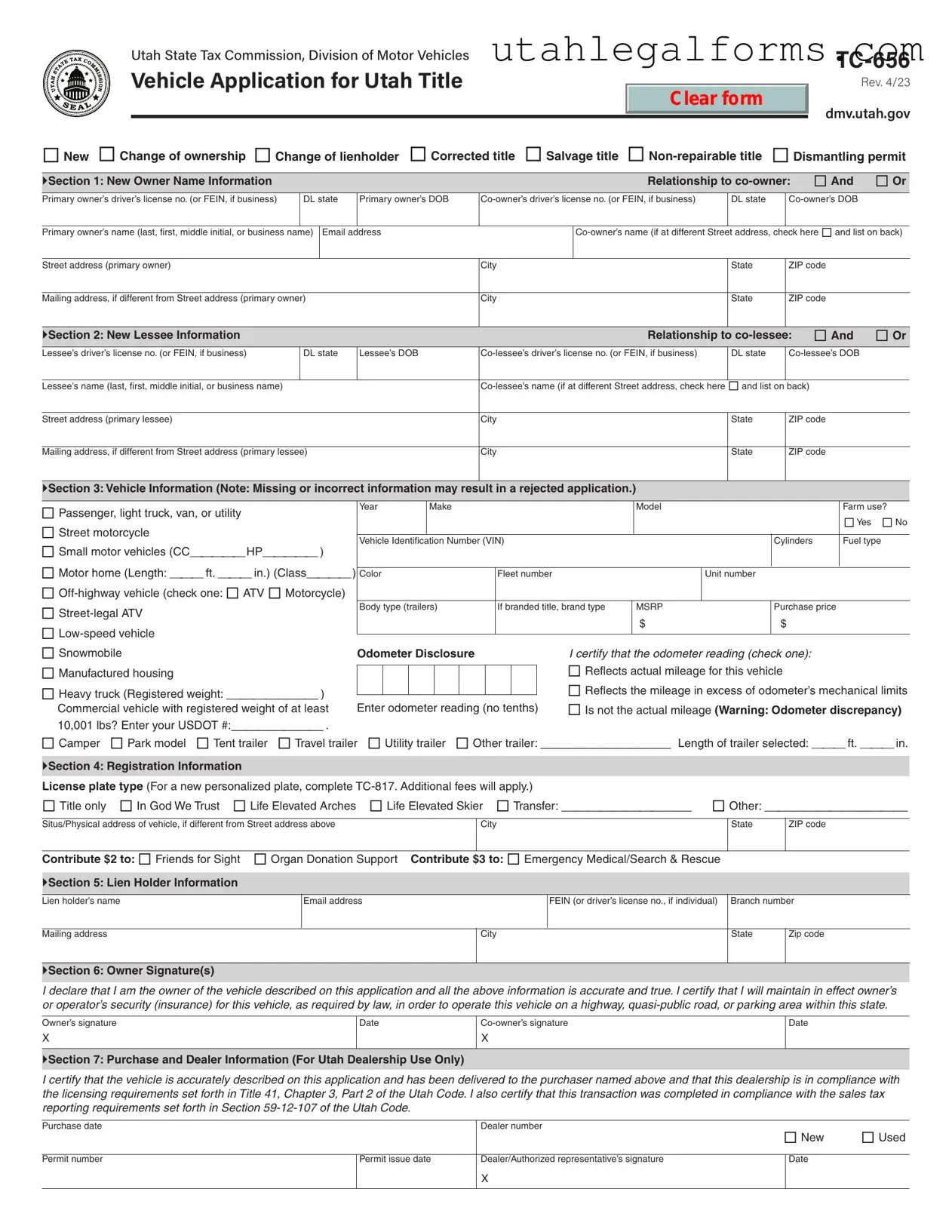Fill a Valid Utah Dmv Tc 656 Template
The Utah DMV TC 656 form is a crucial document used for various vehicle transactions, including changes of ownership, lienholder updates, and title corrections. Completing this form accurately is essential to ensure a smooth registration process. If you need to fill out the TC 656 form, click the button below to get started.
Access Utah Dmv Tc 656 Now
